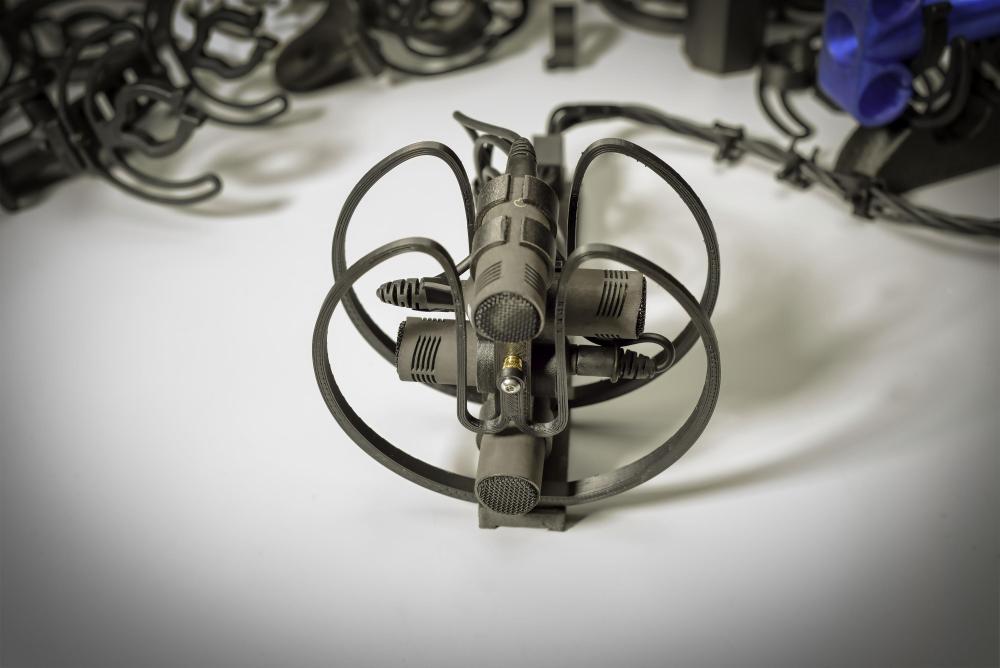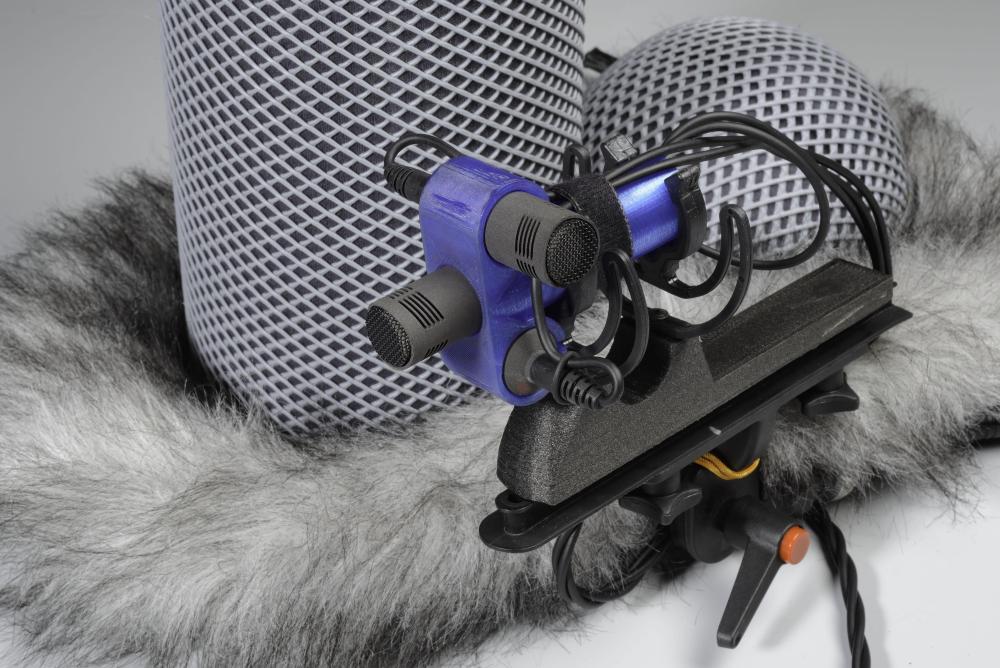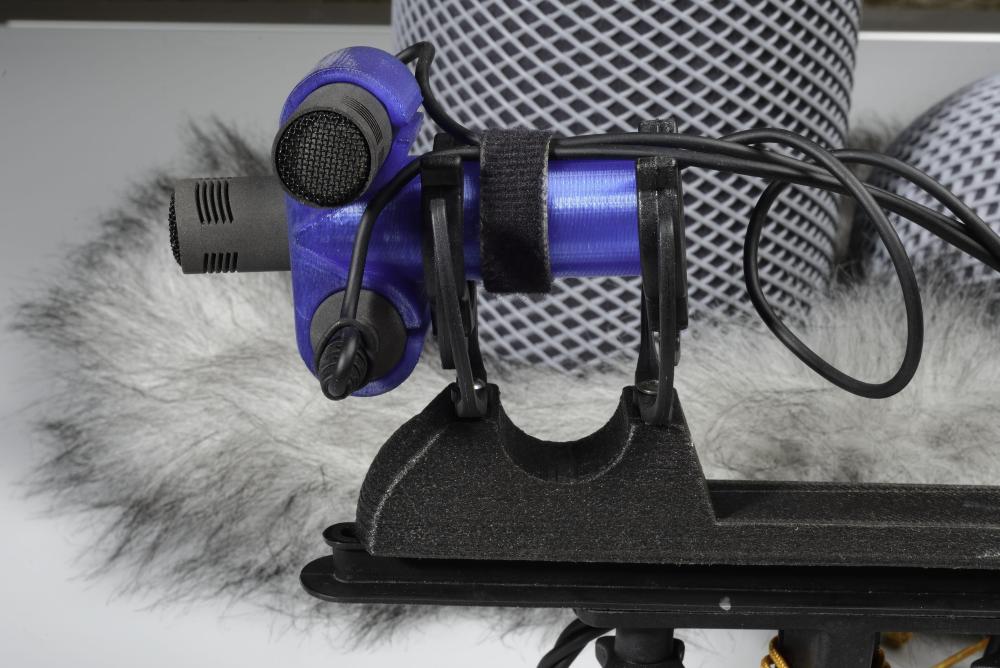
MDVolle
Members-
Posts
6 -
Joined
-
Last visited
-
Days Won
1
Profile Information
-
Location
California
-
About
General Audio Engineer - film to theme parks - Experienced in field and studio, I've also designed complex systems for theme park attractions
-
Interested in Sound for Picture
Yes
Recent Profile Visitors
The recent visitors block is disabled and is not being shown to other users.
-
Throwback, The primary "constraint" of the Rycote stereo blimp is largely because I have it (and partially because its paid for)... and I use it with other configurations - I have "sleds" printed for each configuration so I don't have to mess around with re-mounting spacers and lyres each time. It also seems to work reasonably well at lest in this testing phase. I add a thin foam windscreen to the omni inside the blimp plus the fur when things start to pick up - because the omni is only targeted to be used for LFE, the slight HF loss is ok. Even at home, five miles into the national forrest, finding usably quiet environments has been challenging - jets at 35-40,000 feet can show up in the LF from 10-20 miles out depending on humidity and temperature - I kept looking for what was affecting the stand and mics on the ground for about 30 minutes before making the correlation and looking at a live air traffic map Ideally, the cluster would sit in a significantly larger structure but the suspension is nearing useful - and better than all previous attempts - the four mics together are surprisingly heavy (a little over 35g each) and the suspension is being printed so that the position you see the mics in has already sprung by about 18mm. To the extent that I can get away with a smaller screen, its helpful when planning to hike the package into remote locations I have considered a flat arrangement - the mics would be a bit further apart but for distant sounds, that seems survivable - it would result in a more disk like screen but it was harder to get all the suspensions to match. And yes - a decent 3D printer is extremely helpful - the flexible parts are PA6 nylon and the rigid parts are a carbon fiber nylon which can even be threaded but I used heat-set inserts in this case - the longest print in the whole process was the sled and it's under an hour. The rings still sag a bit over time and the lower half of the outer arc will have to be stiffened a little more - Cineli, I think my earliest efforts were trying to keep an MKH 816 from bouncing around inside its Zeppelin - both side to side and lengthways while trying to record orca whales up close and personal - boat motion, boom and a whale that thought the furry was a fish treat to be eaten made it an interesting project - the foam isolators would tear in no time and couldn't keep the front of the mic off the inside of the screen while dodging being chomped on. We had to go back to rings, shock cord and a third ring forward in the blimp to control the nose.
-
My design has evolved - the four mic cluster was re-stacked slightly to improve clearance in the windscreen The mic clips were re-designed to be supported from both the front and rear of the mics - Softer shock mounting done only from behind the cluster kept sagging or collapsing by the time it was soft enough to isolate low frequencies The "Lyre" idea had to be expanded and the lower sections made stiffer to allow the upper portions to be softer but prevented from sagging by the stiffer sides of the curve Cable management got a clip arrangement at the back to keep things in place The "sled" portion that mounts the cluster into the Rycote stereo blimp was lowered to allow the larger support ring geometry Resonant frequency seems to be better (lower) than previous attempts with actual Lyre mounts as they were being used from behind the cluster and were always overloaded Lots of "learning parts" printed along the way and developed a more profound appreciation for the design of the Rycote Lyre clips - The cluster is two side 8090's, an 8050 front and an 8020 to capture LFE content - subtracting the front from the sides yields rear/surround channels while the Left, Center and Right work discretely or combined as a stereo feed.
-
Nelly and Wandering Ear - Thanks for responding - I have played with pads under the stand feet and am working on a printable soft foot for my stands (typically lighting stands or tripods) and the softer Sorbothane materials seem to work really well if you match the square area to the load - once sorted out, it seems to work repeatably and well. I've also combined their stud based isolators between the stand and the mic holder - creating another layer of isolation - I'll add a photo at some point I am looking at the cable problem - have some very thin cables but may test without the rubber jacket. As for wind protection - yup - bigger harder problem but I'de be fairly happy with 15 HZ - the challenge being that I don't know of an input that has as low a HP filter as 12 -18 Hz. If I can clean up the capture enough to not have things clip or collapse, tailoring the super low bottom would be acceptable. Thin foam windscreens inside a large format windscreen(14cm diameter) seems to work somewhat for general conditions but if any real wind picks up, even fur seems to have limitations - I did try a really large custom "ball" (50CM Dia) but my materials and sewing skills left a lot to be desired - although something to revisit. Trying to preserve lows and highs keeps the challenge lively. My next step on the mechanical isolation will be to build a 8-200Hz "noise source" - probably will only be able to test in two planes at a time (one diagonal actuator) and try to actually test the system performance.
-
My solution is slowly evolving - Having a 3D printer helps - I am using sturdy lighting stands or tripods to hold the array - which helps but definitely decreases mobility - the goal would be to get a little more leeway in mounting and handling Soft/elastic suspension attempts continue to be either too floppy/saggy or too stiff - and mechanically, seem to require a lot of tuning for a specific weight - tried printing Shore 85A and 95A plastics held in a Carbon Fiber Nylon printed "frame" but definitely did not improve on the Lyre mounts. I did manage to create a Quasi-Lyre that is a little stiffed in the X/Y directions and softer in the Z-axis - so I will continue to pursue that idea for the cluster. My heaviest cluster of mics is a pair of Sennheiser 8090's L/R and an 8050 forward - adding an 8020 for extreme LF if needed - Currently its held together by a printed clip resting in a pair of Lyre mounts in the Rycote stereo blimp - this overloads the Lyres but has been workable with great care in mounting and holding - With a little "decoding" this can yield a 5.1 - its definitely not a 360 or ambisonic approach - but has been working well.
-
Roland - I hadn't found Chris' paper and was hoping to - so that's a great help - My primary "cluster" at the moment is four 8000 series Sennheisers, all with remote head cables - I have two 8090's at 90 degrees left and right with an 8050 straight forward and an 8020 omni - with a little effort. you can extract a full 5.1 set of signals from the "cluster" all mounted in the Rycote ORTF windscreen - although using it lengthwise rather than sideways as shipped. The spacing of the capsules is as tight as possible with a custom clip, then held in Lyre mounts - for any source more than 18" away, the capsule spacing doesn't seem to cause any issues - even used as a quasi-MS. Documentary Sound Guy - The gimbal idea did cross my mind and I tried it because I had a large gimbal but at low levels, the servo motors are just too noisy - but it did seem to help with the LF issue (tough to boom a full size Ronin but actually tired it on a 17' jib arm) - my aim is to share what I find but I'll try to condense the "Didn't work" examples that are already accumulating.
-
MDVolle started following Shock/Isolation mounts for extreme low frequency?
-
I have used many variations of shock mounts on stands and poles - studio and field but am struggling with a new application My new problem - recording ambient sounds destined for applications with an LFE channel - often adding an additional omni capsule to maximize the LF capture in addition to directional mics. In most cases I'm actually using a small cluster of mics but am noticing that with the low frequency running down to the limits of modern mics, 8-10 Hz, I'm experiencing new issues I didn't ever notice with a HP or mic roll-off around 30 Hz My understanding is that the Lyre mounts were designed to a low frequency effectivness of 20 Hz (which they seem to do very well) but I'm wondering if there is any mount, mount combination or design specific to covering down to 10 Hz? I know that this is a complex mechanical challenge - making compliance and damping really challenging to balance. I'm also feeling that in some cases, individual mounts per mic won't image as well as mounting the array rigidly together and then on an isolation mount (making using the Lyre mounts more difficult - but still the most effective tool I've found, so I'm combining them to hold the array) Again, this wan't an issue until trying to capture wave crashes, waterfalls, avalanches, thunder - big physical events with really low frequency content and even the slightest motion or vibration in the stand or pole results in clipping. Any suggestions or ideas?






